My relationship with the 2019 Range Rover HSE P400e plug-in hybrid was a brief and tumultuous affair. At first, this SUV was everything. I was completely enamored with its ergonomics and smooth acceleration. But over a few days and some miles, we had our tiffs. There were tantrums. I finally realized that the vehicle is imperfect.
(Full Disclosure: I’ve been fantasizing about a hybrid Land Rover since the first time I refueled the Discovery 1 I owned in college. Now that such a machine exists, I asked Land Rover’s folks if I could borrow it, and they were kind enough to oblige.)
The Land Rover Range Rover probably enjoys some of the best brand recognition in the car world. Everybody knows what a Range Rover is, even if they don’t really know anything about them.
Among the general populace, the melodiously alliterative name is synonymous with opulence and self-indulgence. See also: Rolls-Royce; Ferrari.
A fuel-efficient take on the product switches things up a little bit, and it’s not immediately clear what it is trying to be. A hybrid Range Rover could be conspicuous consumption for the environmentally conscious. Or, it could be just a solid luxury SUV that rides gracefully and can go a long time without stopping for gas.
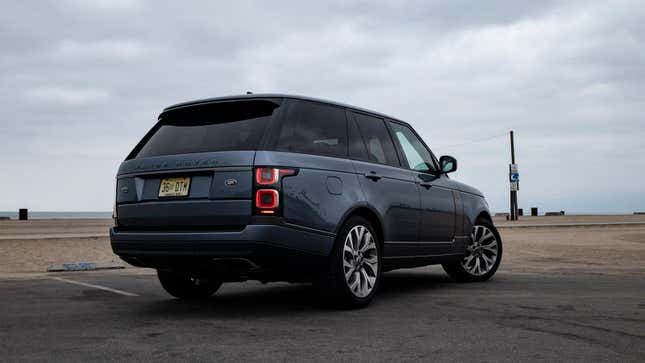
Whether the creation of this plug-in hybrid Range Rover was an act of corporate altruism, or just a play to appeal to wealthy people whose personal brand isn’t compatible with gas-guzzling, we may never know. But I love SUVs and I don’t mind trading mpgs for off-road performance, and even I think the P400e is the Range Rover to get, if you must get a new Range Rover.
How Much Gas Will A Plug-In Range Rover Actually Save?
As of press time Land Rover has declined to publish an American fuel economy claim and doesn’t have to since the car isn’t actually on sale in the U.S. yet. In England, where the Range Rover P400e is already on the road, Europe’s Worldwide harmonized Light vehicle Test Procedure (WLTP) promises 75.7 mpg to 85.1 mpg.
But an English Imperial gallon is a little bigger than an American gallon (about 128 versus 160 fluid ounces), the Europeans use different testing methodology than the EPA, and most importantly, plug-in hybrid economy numbers are always a little nebulous. It’s tough to figure out how specs factor in when the vehicle is running only on electric power versus when the combustion engine is assisting, how it performs when the battery is charged versus when it’s left empty.
To avoid getting too sidetracked, I think Car & Driver articulated its findings pretty well in its review of the hybrid Rover:
“For any journeys substantially beyond its electric range, Land Rover acknowledges that the P400e’s fuel economy is unlikely to prove better than that delivered by the Td6 diesel model; on the basis of trip-computer readings rather than brimmed tanks, real-world economy in the low-20-mpg range seems likely.”
C&D estimated the vehicle’s combined gasoline plus electricity efficiency at 49 mpge, placing the non-assisted economy at 23/21/25 for combined/city/highway ratings respectively. I didn’t have the opportunity to do a sufficiently scientific test to share any numbers of my own.
But like many plug-in hybrids, the real fuel burn rate of a Range Rover P400e is going to vary wildly depending on your use case. If you’re like me and you live in a big city and spend long hours making short trips, you could very well get around hardly ever activating the gasoline engine. That is, provided you can charge your vehicle at night.
If you end up doing heavy miles though, you’re going to feel the weight of having to fuel a heavy car here, regardless of whether or not it’s battery-assisted.
What’s Great
If there’s no sub-heading like “Rule, Britannia” or “something something Majesty,” can you even be sure you’re reading a Range Rover review? Far be it from me to futz with that tradition–the 2019 Range Rover has imperial swagger in spades.
It’s the combination of polished surfaces, uniquely supple leather dyed in interesting colors, regal slabs of wood and chrome in the dash, and of course, vast panels of glass through which you can survey your lessers from the driving throne of a Range Rover that makes these vehicles feel special.
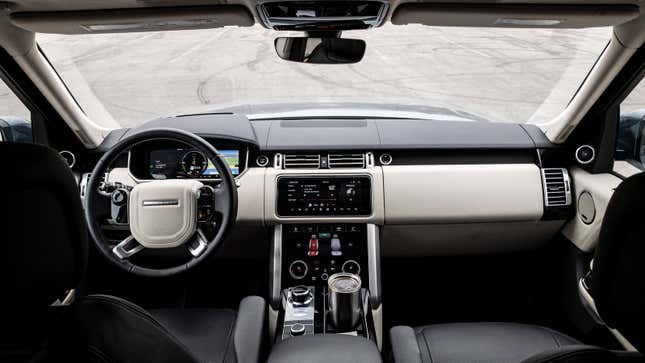
There really is an aura of museum-grade classiness in the Rover cab that Mercedes-Benz, Cadillac, and this English SUV’s other rivals haven’t quite harnessed.
Every switch in the Range Rover feels important. There are large flat spaces to rest your elbows, wrapped in lovely materials. And the smoothness of all those exquisite interior surfaces translates to the driving experience as well.
Historically, all that pomp and circumstance has been propelled by a big, healthy V8 which provided the on-ramp oomph you need to feel like a king when you step on the gas. You can still order such an engine, but this P400e has a puny 2.0-liter four-banger paired with an electric motor.
Of course, it only seems “puny” until you step on the power, because the total hybrid system output is an immense 472 lb-ft of torque and 398 horsepower. When the electric battery’s charged, the Range Rover Hybrid vaults through traffic and keeps right up with all the most wasteful equipment in Los Angeles. And all the better: It does so in near-silence.
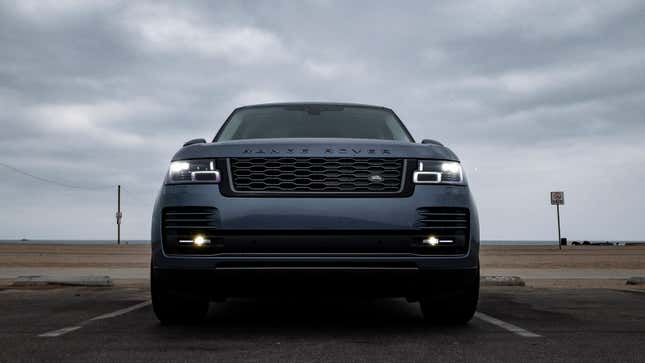
This isn’t the Range Rover for pretenders who can’t afford a V8, it’s for those who understand that true class is about discretion and understatement. But, you know, still want to be seen in a Range Rover.
What’s Weak
There I was prancing down Venice Boulevard with the Range Rover’s windows wide open, treating myself and everyone in a 50-yard radius to Mozart’s 25th symphony as performed by the HSE-standard Meridian stereo, when I was struck by betrayal. A ray of sun glinting off a piece of chrome seared my eyeball so directly and viciously I thought I might have been in God’s laser sights for a smiting.
Yeah, before we even talk about performance defects, basic tenets of comfort need to be addressed. All that interior chrome that looked awesome in my parking garage went from “elegant” to “hubristic” as soon as it got hit but the sun.
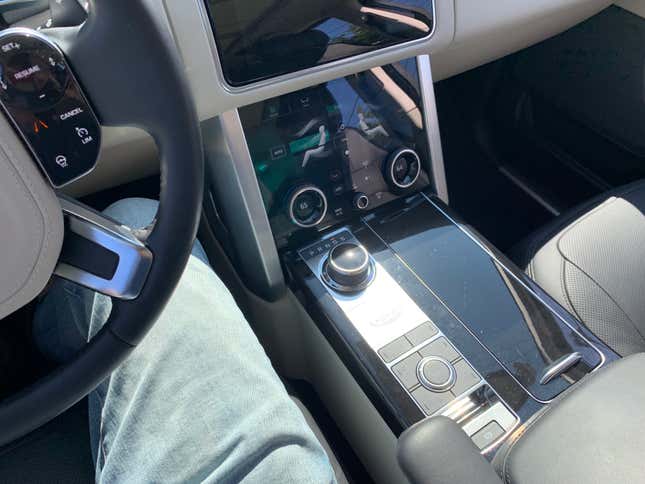
The brief blindness wasn’t followed by a lethal lightning bolt, but this problem persisted–I got sun flashed by painful reflections off the console enough times to feel confident saying that Land Rover’s found the threshold of how much chrome is too much chrome in the cab of its SUVs.
The infotainment system’s slowness to react to inputs further deteriorates the ambiance of grandeur. While the 2019 Range Rover’s screen seemed to work better than any Land Rover I’d driven previously, it still felt sluggish compared to my iPhone. And anyone who’s climbing into a $100,000 SUV on a regular basis is going to have a better smartphone than I do, making the contrast even more frustrating.
I also struggled to operate the Rover’s lane-keeping assistance system. Or rather, it didn’t seem to do anything.
But the more significant annoyances came from the powertrain. The automatic start/stop feature, which shuts the engine down during idle periods and is a common fixture in modern cars, felt rough and unbecoming of six-figure executive transport.
In normal Los Angeles city driving, the 31-mile EV range of the battery seemed to diminish more quickly than I expected. Since I didn’t do any real science regarding efficiency, I’m not going to say it didn’t live up to the claim. But my EV experience didn’t get much better when I tried to plug in the vehicle in a parking garage, only to discover the plugs were incompatible.
Still! I was determined not to let anecdotal misadventures with electricity taint my opinion of the SUV, and it came with a slow charger for standard wall plugs so I just hooked it up on that in the back yard of a friend’s house while I worked on other projects.
Charging this way is possible, but entirely impractical. Land Rover advertises a 14-hour “overnight” charge time on a regular house plug, so, if you’re empty and you plug it in for even what seems like a good chunk of an afternoon, you pretty much get nothing. (If you were to own this car, I’d highly recommend you order the wall box charger that apparently cuts that time down to less than three hours.)
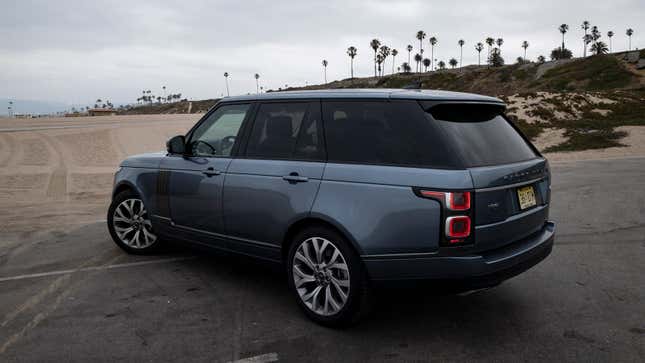
But while we are talking anecdotes–I was pretty annoyed to find that my loaner Land Rover lived up to clichés about fragile temperament as much as the ones about having a royal aura. At one point the infotainment screen got bricked on the Land Rover logo until I power cycled the car. Also, the EV battery charging plug release was broken, so every time I wanted to unplug it, I had to open the hood and pull the manual release tab.
None of these problems were what I would describe as deal-breaking, but they did wipe some of the luster off life with a brand new $100,000 Range Rover.
Verdict
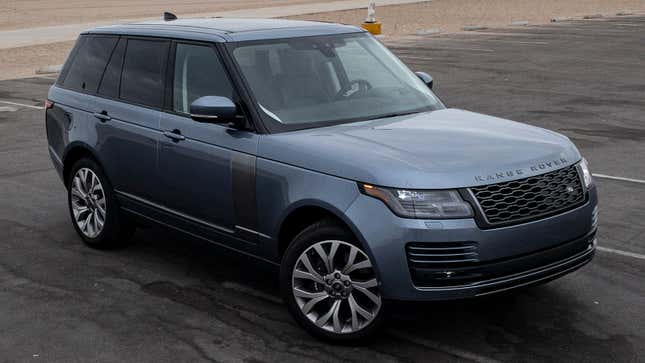
The Range Rover P400e does so much right. The vehicle’s current design is a perfect modernization of classic Land Rover looks. Near-silent operation in traffic is absolutely divine and when the vehicle’s EV battery is charged, acceleration from a stop is swift and decisive enough to put a smile on the least-wrinkled face in England.
If you’re careful with the gas pedal, you might be able to go weeks without refueling. You’re going to want to stop a lot to recharge to get the most out of the hybrid powertrain’s performance, though.
It will be interesting to see if electrification ends up “saving” large and luxuriously wasteful SUVs like this–rumor has it the next Toyota Land Cruiser will go hybrid, too. I guess I’m not against the change on principle. (Though even I’ll miss the burble of a big engine.) Whatever it takes for me to be able to keep stomping around town in tall trucks while the world catches fire and gasoline becomes expensive enough to kill for.
Practically speaking, it certainly is nice to imagine driving something like this without stopping for fuel every week.
But the Rover’s glitchiness was really a big ugly insect in the salad of enthusiasm I had for the thing. Part of me wants to forgive little things like infotainment hiccups and little release latches snapping because I put up with much worst in my own cars. Then again, most of my own cars have traveled nearly the distance to the moon and are worth less than a few lease payments on a Range Rover.
If you’re looking for the ultimate execution of technological perfection, this ain’t it. But if you’re into Range Rovers and everything these things are about, the plug-in hybrid is a really nice elaboration on a familiar formula.
Correction: A British Imperial gallon is larger than an American gallon, not the other way around.
